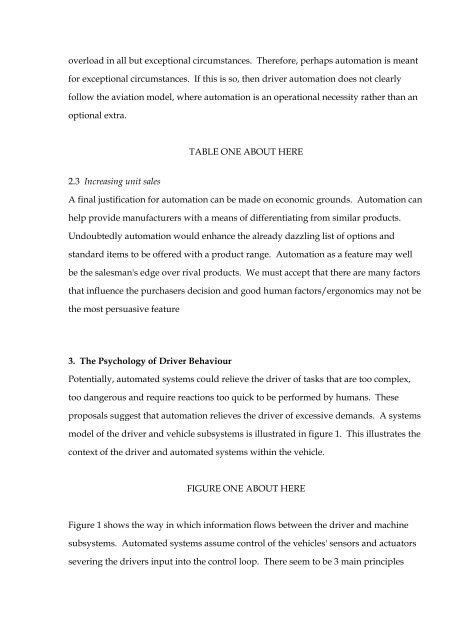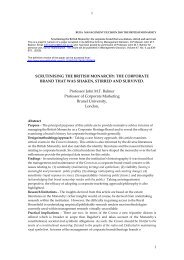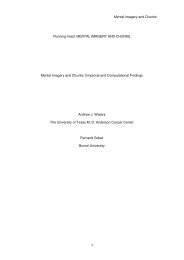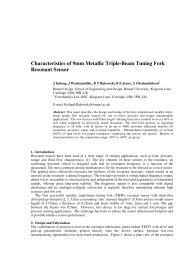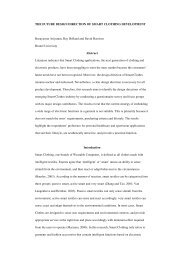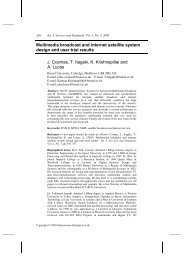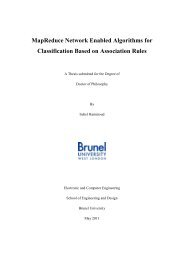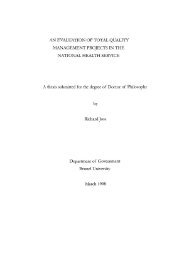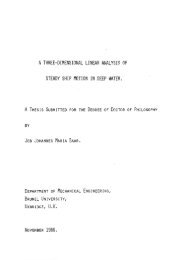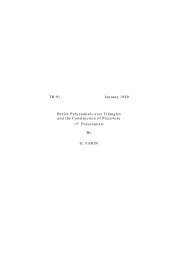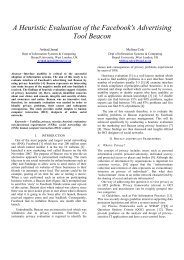From Fly-by-Wire to Drive-by-Wire: Safety implications of automation ...
From Fly-by-Wire to Drive-by-Wire: Safety implications of automation ...
From Fly-by-Wire to Drive-by-Wire: Safety implications of automation ...
You also want an ePaper? Increase the reach of your titles
YUMPU automatically turns print PDFs into web optimized ePapers that Google loves.
overload in all but exceptional circumstances. Therefore, perhaps au<strong>to</strong>mation is meant<br />
for exceptional circumstances. If this is so, then driver au<strong>to</strong>mation does not clearly<br />
follow the aviation model, where au<strong>to</strong>mation is an operational necessity rather than an<br />
optional extra.<br />
2.3 Increasing unit sales<br />
TABLE ONE ABOUT HERE<br />
A final justification for au<strong>to</strong>mation can be made on economic grounds. Au<strong>to</strong>mation can<br />
help provide manufacturers with a means <strong>of</strong> differentiating from similar products.<br />
Undoubtedly au<strong>to</strong>mation would enhance the already dazzling list <strong>of</strong> options and<br />
standard items <strong>to</strong> be <strong>of</strong>fered with a product range. Au<strong>to</strong>mation as a feature may well<br />
be the salesman's edge over rival products. We must accept that there are many fac<strong>to</strong>rs<br />
that influence the purchasers decision and good human fac<strong>to</strong>rs/ergonomics may not be<br />
the most persuasive feature<br />
3. The Psychology <strong>of</strong> <strong>Drive</strong>r Behaviour<br />
Potentially, au<strong>to</strong>mated systems could relieve the driver <strong>of</strong> tasks that are <strong>to</strong>o complex,<br />
<strong>to</strong>o dangerous and require reactions <strong>to</strong>o quick <strong>to</strong> be performed <strong>by</strong> humans. These<br />
proposals suggest that au<strong>to</strong>mation relieves the driver <strong>of</strong> excessive demands. A systems<br />
model <strong>of</strong> the driver and vehicle subsystems is illustrated in figure 1. This illustrates the<br />
context <strong>of</strong> the driver and au<strong>to</strong>mated systems within the vehicle.<br />
FIGURE ONE ABOUT HERE<br />
Figure 1 shows the way in which information flows between the driver and machine<br />
subsystems. Au<strong>to</strong>mated systems assume control <strong>of</strong> the vehicles' sensors and actua<strong>to</strong>rs<br />
severing the drivers input in<strong>to</strong> the control loop. There seem <strong>to</strong> be 3 main principles


